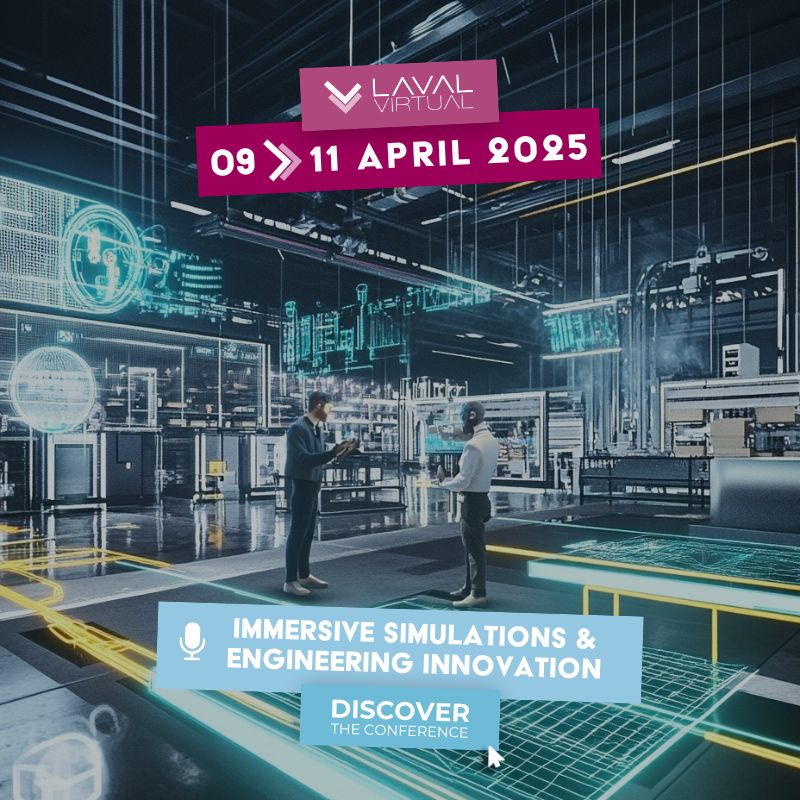
Chenext's XR twin optimizes the entire plant lifecycle.
Crédits photos : Chenext
Chenext Technologies develops immersive applications for companies operating in the chemical industry. Its aim is to reduce the risk of accidents, facilitate collaboration and simplify the work of designers and operators. At Laval Virtual, Chenext Technologies is showcasing its new XR twin solution, which makes it possible to follow a plant through its entire life cycle and optimize all related industrial processes. Interview with Jürgen Moors, Managing Partner.
Can you tell us more about your company?
CHENEXT Technologies was officialy founded on August 2nd, 2024 in Belgium. We develop extended reality solutions and applications for the process industry, like the chemical, pharmaceutical and food industry.
Our focus is a little different from others as we design our solutions for the complete life cycle of a plant. Starting from design over engineering and construction into operations and maintenance. A twin in extended reality that grows with the physical plant.
We want to grant all people involved access to “their” plant, but from their point of view, task and role at hand. For that we create our XR twin starting from the existing 3D CAD models, laser scans or a combination of both.
What will you exhibit at Laval Virtual?
At Laval Virtual we will show our different solutions for the different phases of a life cycle. Some of the applications are new and designed during the 1st quarter of 2025. You can also experience one model in all realities and on all devices (smartphone, tablet, AR-, MR- and VR-goggles. It is XR for the process industry like you have never seen before.
Are you planning any activities or demos at your booth?
At our booth every visitor will be able to step into the world of the process industry and experience the different application in the different phases of the life cycle. You are a fan of AR, the you dive into our AR. You are in love with VR, then you dive into out VR. It is your personal choice of reality where you like to experience it.
Does your company have innovation insights to share with us and our visitors?
Where we are different from most and where we are continuously working on is this life cycle approach. An efficient, fast and cheap construction of the XR twin from the original 3D CAD drawings or laser scan.
Our goal is to make it so fast and cheap, it is a no-brainer not to use it and keep it up-to-date, even after the smallest MOC (Management of Change). But we go further than just the life cycle of the plant for the asset owner, we work to integrate the whole ecosystem with service and equipment suppliers as well. The potential efficiency gain is enormous for this industry in Europe.
How is your solution transforming your business field?
Most companies in the process industry are typically larger international players. What you see is that a lot of information is either locked up in a silo (for instance the engineering silo) or specifically build or gathered for one silo (for instance the maintenance silo). Our approach opens up these silos.
But most of all, it reactivates old expenses or sunk costs. Typically the usage of the 3D CAD model ends after the engineering or at the latest the construction phase. We that money, that was once spent, now finds new value by using the 3D CAD model to generate a twin in XR.
A twin that then can be used for training or operators (we even have an app that allows them to build training themselves (self-authored), remote support via AR in the field, communication and collaboration with other units all over the world inside one and the same reality and exact reflection of the physical plant.
Sustainability and the environment are key topics of this century. How do you cope with these concerns in your XR technologies?
XR has some crucial advantages. In general internal and external regulations for the process industry are increasing and getting more complex. But this also results in a potential risk for mistakes. With an XR twin, where the information is tailored to your specific role and task, this risk is lower and for instance the risk of environmental spill is diminished.
On top of that the ability to collaborate in a perfect copy of the real plant makes collaboration and remote support from all over the globe possible, lowering the need for travel and CO2 emissions.
But the sustainability element is also part of being human. We are all different and the same, but new employees need to onboard ever faster. Now with the XR twin, they have the ability to learn and train on their own tempo, make mistakes without real life risks. This lowers the stress levels and the risk of burnout, making it also for all employees more sustainable.


